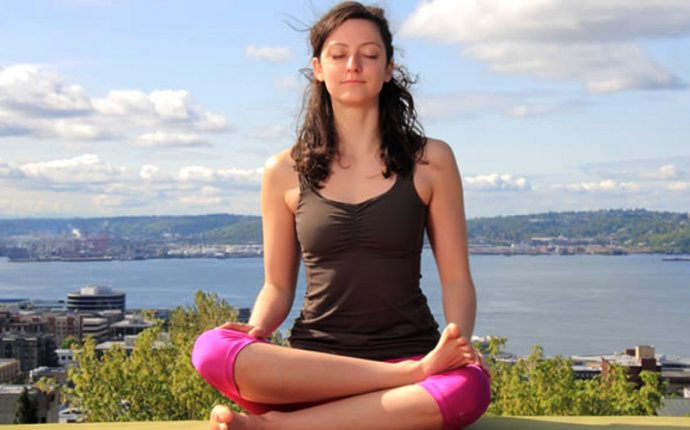
Original Yoga Poses

Hatha Yoga has become, for good or bad, synonymous in many minds with asana (postures).
Yoga Sutras and find asana as the third of the eight limbs of yoga, which certainly seems to shrink the importance of Down Dog. Dig deeper and you’ll come across the fact that by asana Patanjali meant ‘seat’ or ‘meditation posture’.
And where does that leave you? Where it left me was curious;
Where do these postures come from? When did asana stop meaning seat and start meaning posture? What were the original postures?
It turns out that Yoga was not always the ‘body-positive’ movement of today. To put it simply, early yogis thought embodied life was full of suffering and the goal was to escape it. Check out this description from the Maitrayaniya Upanishad of the second or third century BCE;
“Venerable, in this ill-smelling, unsubstantial body [which is nothing but] a conglomerate of bone, skin, sinew, muscle, marrow, flesh, semen, blood, mucus, tears, rheum, feces, urine, wind, bile, and phlegm—what good is the enjoyment of desires? In this body, which is afflicted with desire, anger, greed, delusion, fear, despondency, envy, separation from the desirable, union with the undesirable, hunger, thirst, senility, death, disease, sorrow, and the like—what good is the enjoyment of desires?”
All those forest dwelling yogis, from before the time of the Buddha in the sixth century BCE, all the way up to and well past Patanjali in the second century CE, believed that stopping the wheel of rebirth meant overcoming their physical incarnation.
It wasn’t until Tantra, which began sometime around the fourth to sixth centuries CE, that the non-dualist insight took hold that if there is only Spirit, then all of creation, including the human body, is a manifestation of Spirit and therefore sacred. So in Tantra, as Georg Feuerstein so delightfully put it;
“Instead of regarding the body as a meat tube doomed to fall prey to sickness and death, they viewed it as a dwelling place of the Divine and as the cauldron for accomplishing spiritual perfection.”
The stage was set, but it wasn’t until the Siddha (perfected) movement, within Tantra, that we get elements that would coalesce into Hatha Yoga. In their quest for supernatural powers and the diamond body (a topic for another article), the Siddha yogis developed the postures (asana), breathing exercises (pranayama), energy seals (mudra) and purification techniques (shat kriya) of Hatha Yoga. Traditionally, Hatha Yoga is said to have originated with Matsyendra Natha and Goraksha Natha in the ninth or tenth centuries CE.
And it was kept secret. When texts were finally written about Hatha Yoga many centuries after its inception, readers were admonished to keep it secret still.
Three of these texts are considered primary: the Hatha Yoga Pradipika, Shiva Samhita, and Gheranda Samhita.
Asana came to mean Hatha Yoga posture sometime in the ninth or tenth century, but the earliest written descriptions didn’t come about until these texts.
I put them in this order because, according to scholars, the Hatha Yoga Pradipika was written in the fourteenth century; the Shiva Samhita may have been written in the late fifteenth or late seventeenth centuries and the Gheranda Samhita was written in the late seventeenth century. The Gheranda Samhita has the most to say about asana.
I love these texts.
They intimidated me before I got hold of them, but they’re actually accessible. Each is available free online in pdf format. They’re fascinating, and I think everybody teaching yoga should be familiar with them. These texts are the real deal. No question about it.
The Hatha Yoga Pradipika begins with a chapter called Asana.
It explains;
“Being the first accessory of Hatha Yoga, asana is described first. It should be practiced for gaining steady posture, health, and lightness of body.”
It then names 15 postures. The first 11 are svastikasana (auspicious posture), gomukhasana (cow face posture, legs), virasana (hero posture), kurmasana (tortoise posture), kukkutasana (cock posture), uttana karmasana (intense tortoise posture), dhanurasana (bow posture), matsyasana (fish posture), paschimottanasana (intense West side stretch posture), mayurasana (peacock posture), and savasana (corpse posture).
Strikingly, none of these are standing poses. Not a one. No Warrior; no Dancer. Plus, there’s no Dog, up or down. No headstand or handstand. Maybe they’ll show up soon. (Spoiler: they don’t!)
After listing these eleven postures, the text says;
“Shiva taught 84 asanas. Of these the first four being essential ones.”
It then describes four seated postures: siddhasana (perfect posture), padmasana (lotus posture), simhasana (lion posture), and bhadrasana (fortunate posture).
In case you were wondering when the confusion about names of postures began, it’s been there from the beginning. After describing siddhasana, which the siddhas unsurprisingly viewed as the most important and only really necessary posture, the text goes on to say;
“Some call this siddhasana, some vajrasana. Others call it muktasana or guptasana.”
One pose going by several names appears to be traditional.
The Shiva Samhita has less to say, but it’s an important text and is not to be left out. In the third chapter, titled Practice, verses 90 and 91 show that the disdain of the body was slow to be overcome.
“This temple of suffering and enjoyment, made up of flesh, bones, nerves, marrow, blood and intersected with blood vessels etc., is only for the sake of suffering of sorrow.”
“This body, the abode of Brahma, and composed of fine elements and known as Brahmanda (the egg of Brahma or microcosm) has been made for the enjoyment of pleasure or suffering of pain.”
what is difference between pokemon sun and moon advice for how to respond to bullying how is technology replacing the need for speaking skills How to find out what graphics card i have? Which of these is nearest in meaning to the word hasting as it is used in the passage above? What does state of emergency mean? what are the skills for a good software programer? How to lose your virginity? How to do cool pencil tricks? How to get old w2? what skills are required in a peer advisor What does bihh mean? what is the difference between blendjet 1 and 2 What does ims mean? How to write a mailing address? What does high lactate mean? How to dice an onion? what is equity simple definition How to make a paper plane? Steep what tricks can you do? How to avoid kidney stones? how to improve the seo of a website Tips how to land rc plan? How to cancel showtime on amazon? What does jim crow mean? how to improve communication with your parents What is the meaning of section? how lymph nodes work helper t cells How to polish chrome exhaust tips? How to cut potatoes into cubes? How to write a google review? How to program a spectrum remote? why is so hard to have writing skills Believe what i say kanye meaning? What are the sizes of crochet hooks? What does seeding mean? how to improve severe asthma what is the difference between economy and compact car How to get rid of a toothache? What does free hoover mean? what are tank skills in cod mobile what are recreational drugs definition How to get rid of zits?








